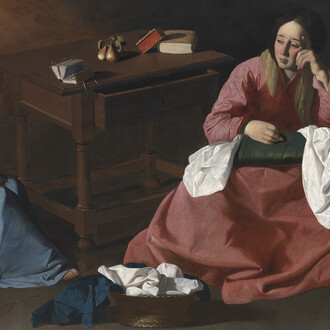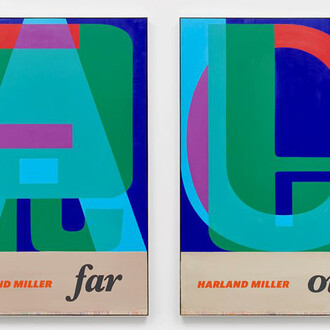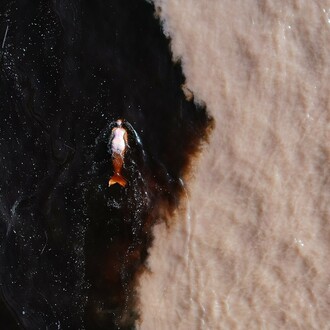The dog has a face. Not a dog face, but a human face. To be honest, so does the goldfish, but it’s the dog that’s looking at you so plaintively, eyebrows all a-furrow. And that coconut is positively glowering, a distant cousin of The Magic Pudding, while those little fluffy chicks are literally staring into the face of very dismal life cycle. It’s a bizarre menagerie of imaginary creatures, heightened alternate reality and tragicomic gleefulness that British artist Steven Allan presents in Don’t Leave Me This Way (4 September–3 October) at CABIN gallery, but it’s also an unvarnished and unimpaired glimpse into his brain.
In previous works, anthropomorphic bananas took on the exaggerated facial expressions and features of the creations of 16th century Italian painter Archimboldo, famous for creating faces out of a variety of fruits and vegetables. Here, bananas inhabited a bizarre, surreal alternate universe in which the tragicomic and the grotesque lived side by side. Dancing hand in hand, lit from below, they brought to mind the ghostly and oppressive effect of the faces in van Gogh’s The Potato Eaters, or the general aesthetic so popular during the Golden Age of Dutch painting, in which faces would be lit from often by a single light source, features heightened amidst the shadows and shown in stark relief. They were frightening in their madcap antics, human and alien at the same time.
Indeed, Allan explores a range of different ideas and anecdotes, drawing on the world around him to create works sparked by various associations and incidents. Emotions, existentialism and a sense of the absurd are presented through a series of comic scenarios, at once tinged with sadness or brutal reality. His work is an emotional response to his everyday life, commenting on where he finds himself mentally as well as touching on what he perceives in society and the world around him. “The title of this show is a response to the current human climate of fear, loneliness and stagnation,” he explains. “It is about how we, as people, are becoming ever more immobilised by our worries. Just as modern times have created a false sense of security, belonging and convenience, so too this work is about being your own worse enemy.” In doing so, it projects new meaning onto normal everyday domestic situations and subjects by way of juxtaposition and incongruous visual and metaphorical combinations.
The work from which the exhibition draws its name, Don’t Leave Me This Way, for example, speaks of the artist’s fascination with dogs’ ability to speak with their eyes. The sad, longing look they give when being left behind by their master is almost human. In this case, it very literally is. Similarly, the emptiness of the life of a goldfish in a rundown, forgotten corner of a pet shop is exemplified in the fish’s humdrum expression – left circling aimlessly within the confines of a dirty fish tank. Oh Well, meanwhile, suggests there is a certain irony in falling down a wishing well, and those poor chicks, never did a rubber chicken have such certain inevitability and futility. All is not doom and gloom, however, for each scenario is so gloriously gleeful in its antics, so preposterously surreal, that, in a world as mad as a hatter, rather than running away when we hear the Queen of Hearts shout “Off with their heads!” instead we stay and laugh.



















